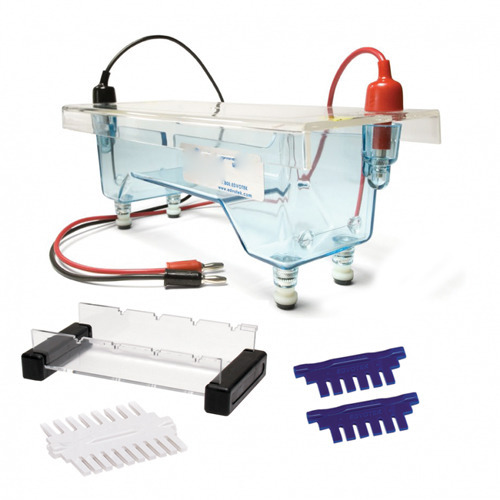Positive or negative electrical charges are frequently related to biomolecules. Once placed in an electrical field, charged biomolecules move towards the conductor of opposite charge thanks to the development of static attraction. Natural action is that the separation of charged molecules in associate degree applied force field. The relative quality of individual molecules depends on many factors. The foremost vital of that area unit web charge, charge/mass quantitative relation, molecular form and therefore the temperature, body and body of the matrix through that the molecule migrates. Complicated mixtures will be separated to terribly high resolution by this method.

Hydrated gel networks have several fascinating properties for electrophoresis. They permit a good style of automatically stable experimental formats like horizontal/vertical electrophoresis in block gels or electrophoresis in tubes or capillaries. The mechanical stability conjointly facilitates post action manipulation creating more experimentation attainable like blotting, electro-elution or MS identification /finger printing of intact proteins or of proteins digestible in gel slices. Since gels employed in organic chemistry area unit with chemicals rather unreactive, they move minimally with biomolecules throughout electrophoresis permitting separation supported physical instead of chemical variations between sample parts.
There are two types of electrophoresis:
- Vertical Electrophoresis
- Horizontal Electrophoresis
There are two types of gels in electrophoresis:
Agarose Gel Electrophoresis: Agarose gels are simply designed flatbed chambers under a buffer layer to prevent drying due to electro endosmosis. The temperature is only controlled by the applied running conditions. The nucleic acids are separated under native conditions.
Polyacrylamide Gel Electrophoresis: For electrophoresis in vertical systems, the complete gel cassettes are placed into the buffer tanks; the gels are in direct contact with the electrode buffers. Gels for flatbed systems are polymerized on a film support and removed from the cassette before use.
The components used in the electrophoresis are mentioned below
- Power Supplies
- Spot Picker
- Blotting
- Gel Documentation and Analysis
- Centrifuges
- Heating and Cooling Thermo shakers
- 3D Shaker
- Aspiration Systems
We at KERONE have a team of experts to help you with your need for Electrophoresis gel systems and equipment from our wide experience. For any query write us at [email protected] or visit www.kerone.com.
